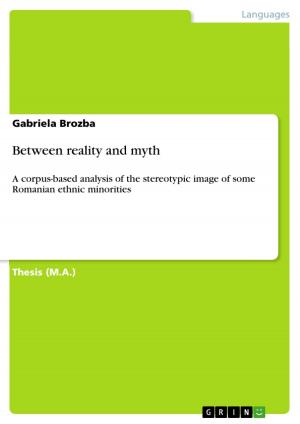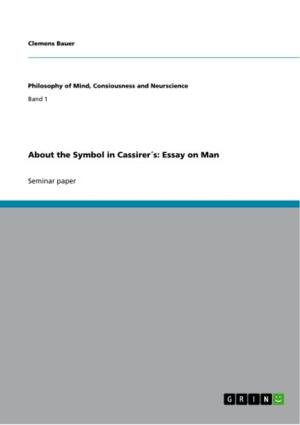Narrative Strategies in Clarice Lispector's 'Family Ties' in Portraying the Characters
Fiction & Literature, Poetry| Author: | Laura Smith | ISBN: | 9783668001541 |
| Publisher: | GRIN Publishing | Publication: | June 26, 2015 |
| Imprint: | GRIN Publishing | Language: | English |
| Author: | Laura Smith |
| ISBN: | 9783668001541 |
| Publisher: | GRIN Publishing |
| Publication: | June 26, 2015 |
| Imprint: | GRIN Publishing |
| Language: | English |
Essay from the year 2015 in the subject Literature - Latin America, grade: 72, University of Birmingham, course: BA Modern Languages, language: English, abstract: From the outset Clarice Lispector's fiction has attracted the attention of readers and critics alike thanks to her consistent emphasis on existential and psychological themes. Indeed, her first novel Perto do Coração Selvagem (1944) 'impôs-se à atenção da crítica pela novidade que a densidade psicológica' (Nunes: 1989, p.11) This 'psychological density' continues into the author's later works, including her short story collection Laços da Família (1960). The thirteen stories invite critical attention for various reasons but it could be said that critics tend to focus on the existential aspect and the stories' similarity to the works of French authors Jean-Paul Sartre and Albert Camus. While this is a legitimate line of enquiry, an equally interesting focus might involve an examination of the techniques used to convey 'a profound journey into the psychology of her mainly female characters'. Techniques such as stream-of-consciousness writing and the literary epiphany are employed to great effect in three stories in particular: Devaneio e embriaguez duma rapariga, A imitação da rosa and Preciosidade. The collection in question does include two stories featuring male protagonists but Laços certainly consists mainly of female characters, which is in keeping with Clarice's tendencies (Fitz: 1980, p.59). In fact one could maintain that all of her female characters share certain similarities; the one exception is seemingly age which varies from each story to the next. Ingrid Muller claims that they are all 'with one notable exception, middle-class women in an urban environment' (1991, p.35), against which one might argue that there is more than one notable exception; with regards to the three aforementioned stories, however, this is an accurate observation. Nevertheless, a more significant linking factor is the portrayal of the inner workings of the characters' minds.
Essay from the year 2015 in the subject Literature - Latin America, grade: 72, University of Birmingham, course: BA Modern Languages, language: English, abstract: From the outset Clarice Lispector's fiction has attracted the attention of readers and critics alike thanks to her consistent emphasis on existential and psychological themes. Indeed, her first novel Perto do Coração Selvagem (1944) 'impôs-se à atenção da crítica pela novidade que a densidade psicológica' (Nunes: 1989, p.11) This 'psychological density' continues into the author's later works, including her short story collection Laços da Família (1960). The thirteen stories invite critical attention for various reasons but it could be said that critics tend to focus on the existential aspect and the stories' similarity to the works of French authors Jean-Paul Sartre and Albert Camus. While this is a legitimate line of enquiry, an equally interesting focus might involve an examination of the techniques used to convey 'a profound journey into the psychology of her mainly female characters'. Techniques such as stream-of-consciousness writing and the literary epiphany are employed to great effect in three stories in particular: Devaneio e embriaguez duma rapariga, A imitação da rosa and Preciosidade. The collection in question does include two stories featuring male protagonists but Laços certainly consists mainly of female characters, which is in keeping with Clarice's tendencies (Fitz: 1980, p.59). In fact one could maintain that all of her female characters share certain similarities; the one exception is seemingly age which varies from each story to the next. Ingrid Muller claims that they are all 'with one notable exception, middle-class women in an urban environment' (1991, p.35), against which one might argue that there is more than one notable exception; with regards to the three aforementioned stories, however, this is an accurate observation. Nevertheless, a more significant linking factor is the portrayal of the inner workings of the characters' minds.















